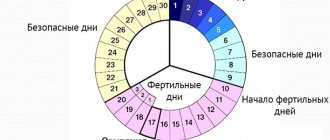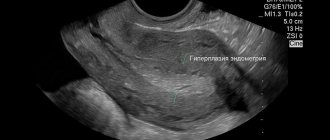Like the beginning of the functioning of the reproductive system, menopause, and with it its final stage - postmenopause, occurs for every woman in due time. The average age is 40 years. However, in recent years the trend has shifted forward by a decade. Due to the fact that women are changing their lifestyle to a healthier one, they are taking better care of their immunity.
This final stage of menopause is preceded by 2 more periods, which are outwardly asymptomatic.
- The very first is perimenopause. Indicated by a slight decrease in estrogen levels, which affects the nature of menstruation and its duration.
- Actually menopause. Diagnosed after the fact - one year from the date of the last discharge.
- And the crowning achievement of reproductive age is postmenopause. The final stages of hormonal changes occur, the appearance of menorrhea is completely excluded.
Postmenopause in women: what is it?
Postmenopause is considered to have begun if a woman has not had menstruation for more than 1 year. At the hormonal level, preparation occurs before the postmenopausal period itself.
The result is that progesterone is no longer produced and estrogen levels drop significantly. If previously the production of a group of estrogen hormones was the privilege of the ovaries, now this is done by the adrenal cortex, adipose tissue and liver.
So estradiol, in addition to its general feminizing effect, affects the lipid composition of the blood. In this connection, women of reproductive age are much less susceptible to atherosclerotic changes. It also affects blood viscosity, blood pressure, and glucose levels. It also has a beneficial effect on: mnestic abilities (memory, attention, thinking), bone formation and pain relief.
Estrone in the premenopausal stage does not play a leading role, but after that the balance of power changes. Produced by adipose tissue. Among other things, it is associated with the development of oncology of the mammary glands and uterus.
Estriol acts on the same principle as its counterparts, but is considered the least weak, in terms of the level of effect produced, than other sex hormones.
Outwardly, the most common and most inconvenient symptom in postmenopause is hot flashes. In addition to it, there are a number of other signs:
- Decreased skin turgor, as a result of which wrinkles appear and the mammary glands “fall off”;
- Due to the general decrease in the elasticity of tissues, the ligaments of the genitourinary system weaken, problems of not holding urine when coughing, laughing, sneezing, etc. appear;
- Hair loss;
- Discomfort, itching, and dryness in the vagina;
- Forced leaching of calcium, manifestations of osteoporosis;
- Sudden rises in blood pressure;
- Hyperhidrosis;
- Unstable emotional state;
- Rapid weight gain;
- Decreased or absent sexual desire;
- Insomnia, difficulty falling asleep;
- Headache.
Pain in muscles and joints during menopause
Lack of calcium leads to wear and tear of bone tissue. This causes joint pain. The legs and back are the first to suffer.
Female hormones are involved in the process of calcium absorption. It is quite logical that a decrease in estrogen causes a deficiency of this mineral in the body. Calcium takes part in the formation of bones and muscle tissue. With age, chronic deficiency leads to the fact that these systems are not able to withstand the loads to which a woman is exposed (frequent swelling in the joints is observed).
Women of menopausal age are 45% more likely to have fractures than men of the same age.
Additional sources of the problem are inactivity and eating fatty foods. Muscle atrophy occurs, they no longer support the bone skeleton, increasing the load on it. In this case, the most vulnerable areas suffer: knees, arms, lower back, back.
Under the influence of hormonal abnormalities, two related diseases develop:
- Osteoporosis. This is brittle bones that is common to most women who go through menopause. A slight blow can be enough to cause serious injury.
- Osteoarthritis. The disease affects the joints; they lack minerals for normal functioning. Chronic inflammatory processes develop. Sometimes this disease, diagnosed in women over 45 years of age, is called menopausal arthritis. With it, the limbs swell, hurt, get tired quickly, convulsions may occur, and weakness can be felt.
Often the back and neck may hurt due to the development of osteochondrosis. It is accompanied by dystrophic changes in the ligaments and structure of the intervertebral discs. The muscles lose their elasticity and do not support the so-called corset well. In particularly advanced cases, an intervertebral hernia develops.
How to support the body during postmenopause?
It is preferable to start preparing for a new stage of life in terms of quality of nutrition, lifestyle, and physical activity several years before the expected changes. It's never too late to take on this. However, in the postmenopausal period it is more difficult to radically change habits, due to other innovations on the part of the body. Is it really necessary to change the rhythm of life when the body doesn’t give rest anyway, and why is it necessary?
- Nutrient provision with vitamins, microelements, phytoestrogens will help the body not to change urgently, depositing fat, to maintain a sufficient amount of the same estrogen. It will help maintain an attractive appearance and maintain balance in the skeletal system. Maintaining optimal caloric intake and frequency of meals will protect you from gaining excess weight. Refusal of harmful products will also help neutralize the signs of postmenopause or avoid them altogether.
- Adequate exercises (for example, yoga) prolong joint mobility and elasticity of the ligamentous apparatus, and reduce stress. Sufficient exposure to fresh air will have a protective effect on the cardiovascular system, significantly reduce the risk of heart attacks and strokes, improve mood, and ensure healthy sleep.
- You should not stop taking calcium, vitamin D and others in tablet form. For a number of reasons, it is not always possible to cover the needs for vitamins and microelements through food alone. This support is especially relevant during the off-season.
- Physiotherapeutic treatment will come in handy more than ever. Starting from drinking high-quality mineral water to visiting sanatorium-resort areas.
- Be sure to undergo regular examinations with a competent gynecologist, visit a mammologist, therapist, and dentist. Do annual medical examinations, consult a surgeon, check calcium levels and bone density. Postmenopause is an age that is caused by changes in all systems, no matter what, so you need to monitor your health especially carefully.
Early onset of postmenopause - reasons
Postmenopause in women at 40 years of age is the same phenomenon as at an older age, caused by the cessation of ovarian function.
However, often the causes of this process are pathogenic, represented by diseases and/or the consequences of their treatment.
- Inflammatory diseases of the fallopian tubes and appendages, surgical removal of ovarian cysts, uterine fibroids, inflammatory processes in the abdominal cavity - all this leads to an adhesive process and irreversible damage to the ovarian tissue itself and a more rapid inhibition of their function.
- Radiation exposure, most often received by a woman during the treatment of oncology of the uterus or nearby organs, leads either to the immediate cessation of the functioning of the gonads or significantly reduces the period of their work.
- Treatment with cytostatics, which is expected in the case of malignant tumors of any location, tends to suppress rapid cell division, which leads to the premature end of reproductive age.
- Autoimmune disorders, such as Addison's disease with adrenal damage, type 1 diabetes mellitus, hypothyroidism, lead to damage to the ovaries.
- The genetic factor also plays a role in the early onset of menopause. If premature onset of postmenopause is observed in one family - grandmother, mother, daughter - this means that for a woman from the represented group this situation is normal.
- Hereditary diseases, such as galactosemia, blepharophimosis, have target organs including the appendages. As a result, rapid exhaustion and completion of work occurs.
- A large number of artificial stimulations of the ovulation period.
- There is evidence that transferred viral diseases, integrating into the cellular structure, lead to the gradual death of follicles.
Read
Symptoms of early menopause
The onset of menopause can only be reliably determined by identifying the level of estrogen in a woman’s blood. The quantitative norms of sex hormones in postmenopause differ from those during the fertile period.
So estradiol decreases to 20 IU/l, with the previous lower limit of 40. This, in turn, affects the reduction in the production of calcitonin by the thyroid gland. This results in calcium deficiency and osteoporosis.
The decrease in estrogen causes the pituitary gland to react, and this manifests itself in the form of greater production of FSH. Indicators increase 4-5 times during the postmenopausal period, and remain at this level for several years, after which they decline.
A significant increase in follicle-stimulating hormone transforms cholesterol stores into androgens, from which estrone is produced. But the situation is not fundamentally improving; the female body continues to suffer from a lack of estrogen.
Luteinizing hormone also tries to revive catastrophically low levels of estradiol and progesterone. Its production increases up to 10 times and amounts to 56 mU/l, over time, like FSH, decreasing, it comes to the figure of 20 mU/l. However, LH indicators must be compared with follicle-stimulating hormone; if the difference is large, then we are talking about pathological processes and serious diseases.
Female sex hormones may have excessive levels at the final stage of menopause. There are several reasons for this turn of events:
- pathology of the adrenal glands;
- liver pathology;
- diabetes;
- thecomatosis and ovarian tumors;
- excess fat deposits (due to transformation into estrone).
Menopause
Menopause is significantly different from menopause. If perimenopause is more of a period, then menopause is more of a process.
Definition
Menopause is the last menstruation in a woman’s life, after which reproductive function completely subsides. The ovaries no longer function, hormones are no longer produced and eggs are not formed. After menopause, another stage begins – postmenopause. It can be early - the first five years after menopause, and late - 10 years. During this time, the body is rebuilt and normalizes its functioning in the new conditions of the absence of sex hormones.
Approximate age
Menopause usually lasts from six months to two years. Thus, if it began at 50 years old, then menopause can occur at the age of 50 to 52 years, etc. Although there are examples of both rapid menopause (less than six months) and prolonged menopause (three years or more).
How does it manifest?
In fact, it is quite difficult to distinguish the last menstruation from the not last one during this period. Distinctive features may be a small volume of discharge, a long delay before the onset of menstruation, a short period of menstruation. But these are optional signs. Therefore, it is possible to find out whether the last menstruation was only over time.
Treatment during postmenopause
Hormones during postmenopause significantly change the situation and create new rules for the existence of a woman’s body. In order to stabilize the resulting dissonance, replacement therapy is prescribed.
Treatment is prescribed individually, since the severity of the ongoing process is different for each representative of the fair sex. To understand the picture, a number of studies are prescribed. First of all, the hormonal background is determined. The following are studied: estradiol, progesterone, prolactin, gonadotropic and thyroid-stimulating hormones. Then:
- Ultrasound of the uterus and appendages, determination of endometrial thickness.
- Examination of the mammary glands - mammography.
- Densiometry - to determine the presence of osteoporosis.
- Study of the skeleton of the skull, namely the contents of the sella turcica, where the main center of hormonal regulation is located - the pituitary gland.
As a rule, to relieve postmenopausal symptoms, combination drugs are prescribed with lifelong use: Climodien, Fimoston, Cliogest, Livial Tibolone.
In cases where a woman has previously undergone hysterectomy surgery, medications are prescribed that contain only one hormone - estradiol. This group includes Ovestin, Dermestril, Estrogel, Climara, Premarin.
Modern developments in the pharmacological industry include low-dose drugs in their arsenal. This minimizes the side effect. These include:
- ospemifene - prescribed for severe urogenital disorders;
- SERM drugs (which include ospemifene) in combination with bazedoxifene. This combination allows you to avoid endometrial hyperplasia and associated pathologies.
Additionally, a calcium supplement may be prescribed, in combination with vitamin D, and other microelements, if necessary.
To maintain estrogen levels and prevent postmenopausal female diseases, diet therapy is additionally recommended. Consumption in various forms is considered beneficial: flax seeds, soybeans, hop cones, black cohosh infusion.
Long-term hormone replacement therapy also has its disadvantages. Studies have shown an increased risk of developing a malignant tumor in the mammary glands and uterus. There is also evidence of an increase in cardiovascular pathology.
Prevention of complications during postmenopause
Preventive actions against diseases most characteristic of postmenopause, as well as smoothing out the aggravating influence of existing complex pathologies, must be comprehensive.
First of all, you should stop smoking; in combination with hormonal changes, it often leads to thrombosis, and as a result, heart attacks and strokes.
It is better to part with intensive alcohol consumption. In addition to increasing hot flashes, alcohol-containing drinks have a detrimental effect on the liver and cardiovascular system.
If such questions do not arise, then an important step would be to switch to proper nutrition that meets the needs of a postmenopausal woman’s body.
Adequate and gradual physical activity, especially if the lady has never done it before, will improve mood, give strength, and strengthen the body. You should focus on walking. In this light, Nordic walking has become popular in recent years.
An indispensable point of prevention is a timely visit to specialists for regular examination. The most frequently visited will be a gynecologist - at least 2 times a year.
How is menopause different from menopause?
The body of every woman and girl is designed in a special way - the number of germ cells in their body is limited. With the onset of reproductive age, eggs begin to mature monthly, establishing the ovulatory-menstrual cycle. And when the oocytes run out, menopause occurs. The period of menopause is completely physiological; one day every representative of the fair sex will face it. Therefore, it is very important to understand in advance how menopause differs from menopause in order to detect these conditions in time and prevent their consequences.
Why is it important to visit a gynecologist during postmenopause?
Due to the fact that the palm goes to estrone, which is associated with an increased risk of developing cancer in women, the need to visit a gynecologist becomes obvious. Especially if at the premenopausal stage there were myomatous nodes and ovarian cysts.
In addition, there are a number of reasons when you should contact a specialist for help.
- In postmenopause, thinning of the epithelium occurs, including that of the vagina, resulting in dryness, itching and burning. Professional recommendations from a doctor will help you cope with unpleasant symptoms.
- If, in a short period of time, your weight has increased or decreased significantly.
- Spotting discharge, as well as painful sensations in the lower abdomen.
- Leakage from the urinary canal.
- Hot flashes and hyperhidrosis at night.
- Sleep disturbance.
- Headache.
- Emotional lability, sudden changes.
Menopause
The concept of menopause refers to a condition in which a woman does not have menstruation for one year. Menopause is divided into 3 stages:
- Premenopause. This period occurs during a woman’s reproductive age.
- Perimenopause. It is typical for women from 40 to 50 years old, when reproductive function begins to gradually fade away. You still have your periods, but they may be irregular, heavy or scanty.
- Postmenopause. This is the name for the time that begins with the last menstruation and lasts until the end of a woman’s life.











